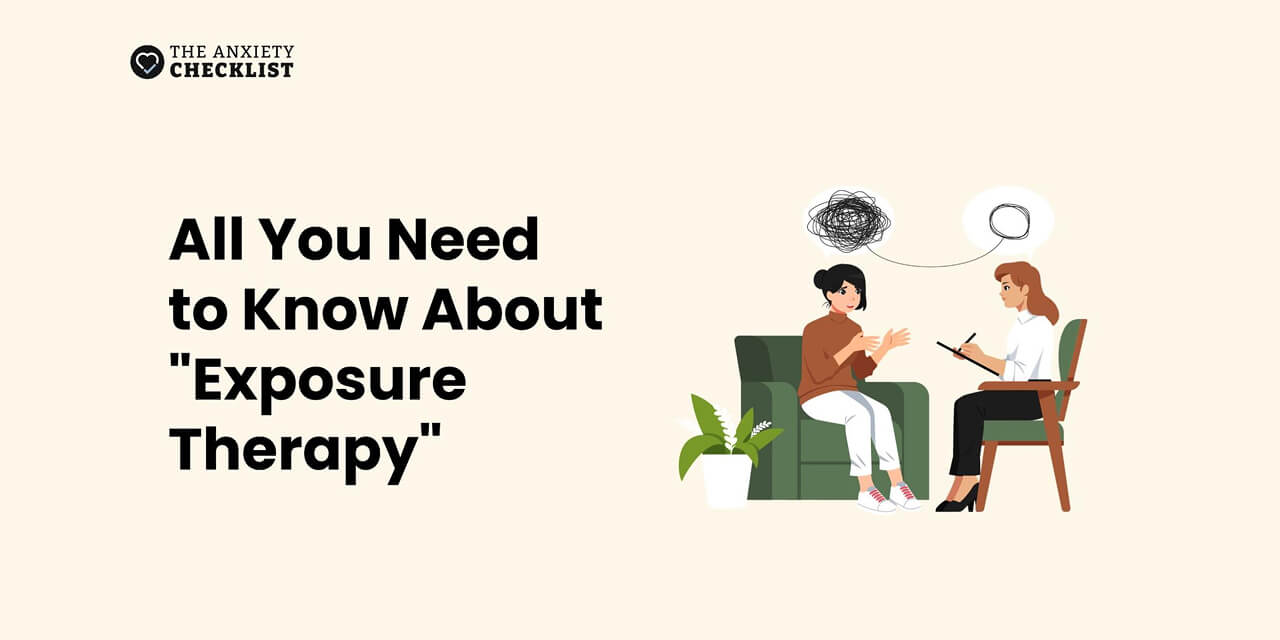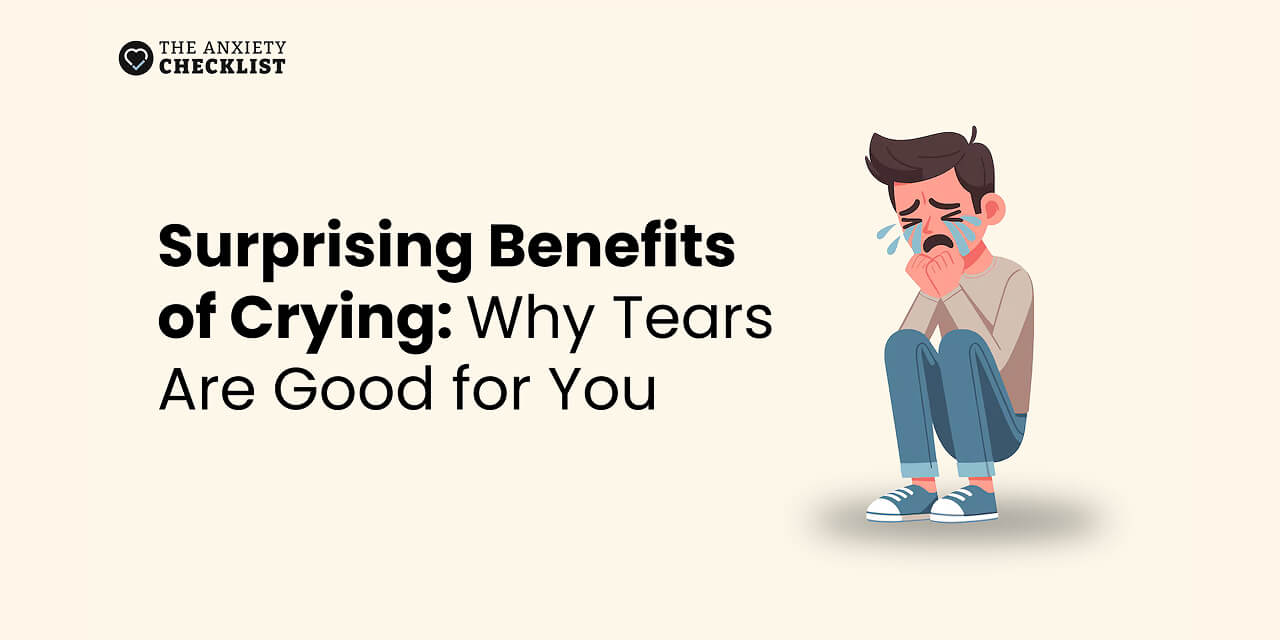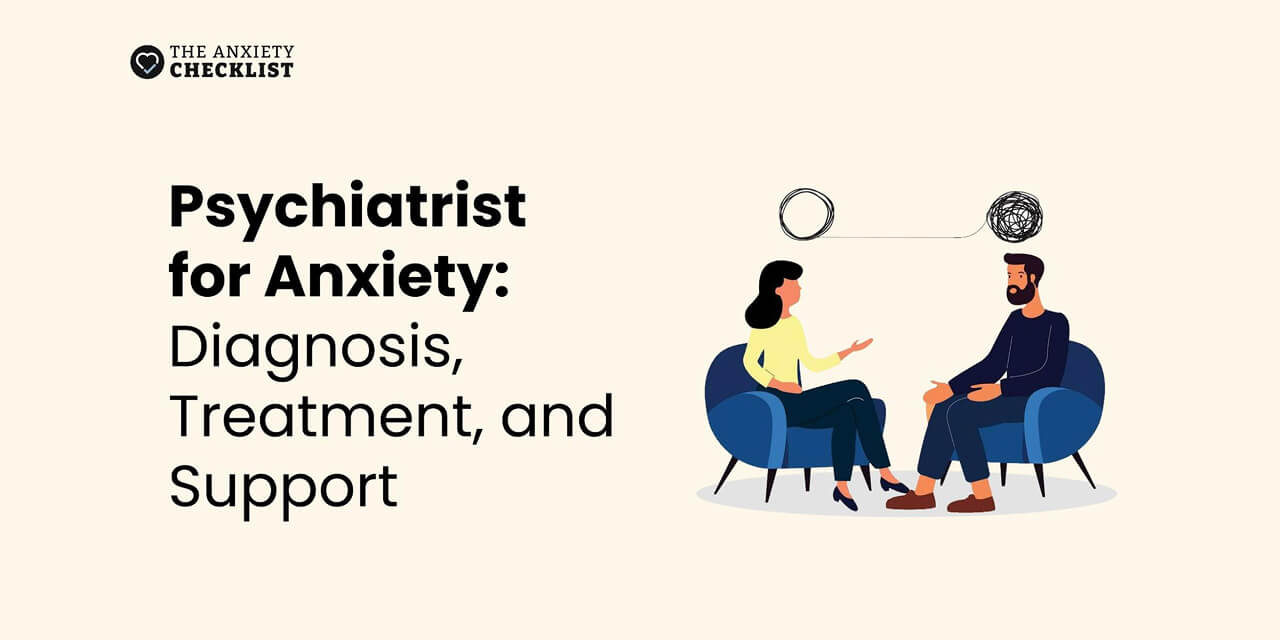What is Exposure Therapy?
Exposure therapy is a treatment that helps people overcome psychological problems, such as anxiety and fears. It’s a type of cognitive behavioral technique (CBT) where the therapist exposes you to the things you fear, activities or situations that cause anxiety in a gradual, and safe way.
The idea is to reduce the intense emotional response that certain situations, objects, or memories trigger. So, instead of becoming afraid or avoiding the source of your fear, exposure therapy helps you to attach a new meaning. This way, you can become comfortable with the scary experience.
Conditions That Exposure Therapy Can Treat
Exposure therapy is effective for anxiety disorders and various mental health issues, such as:
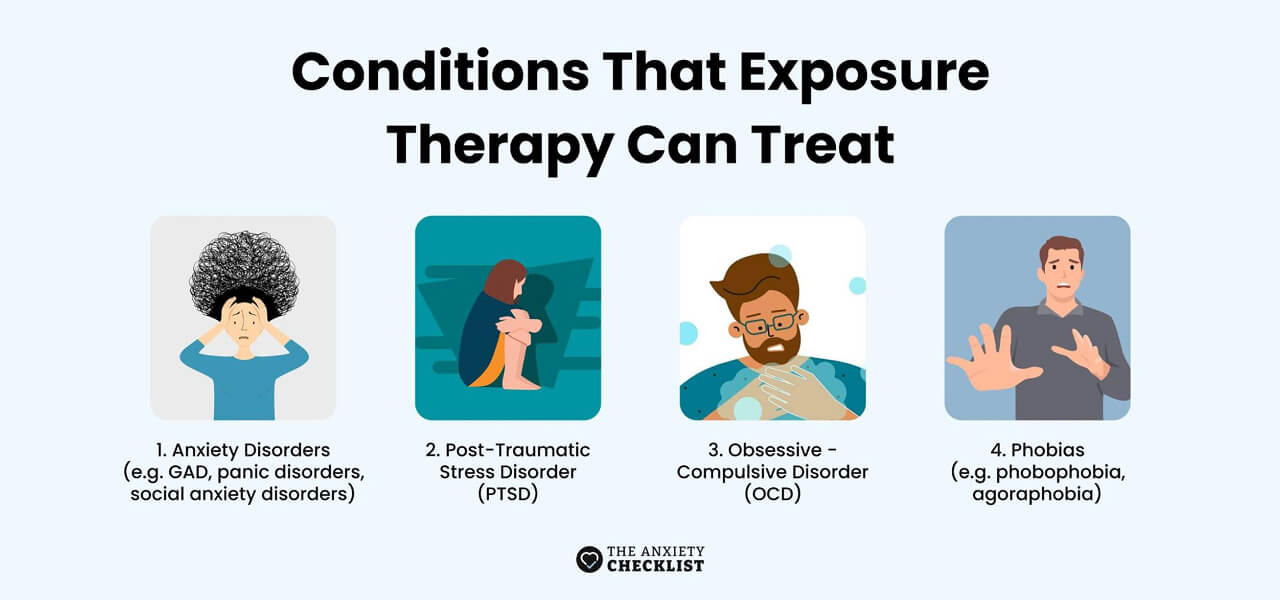
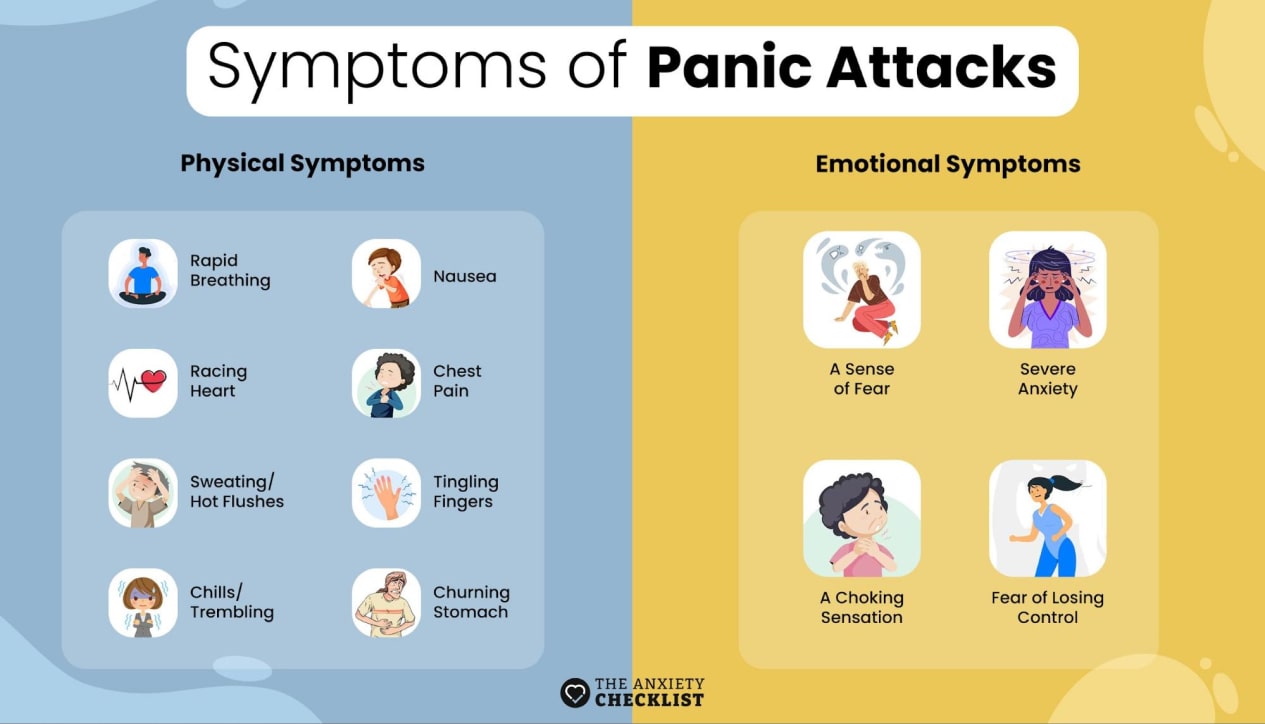
When treating anxiety disorders, a healthcare professional may combine exposure therapy with other forms of treatment, such as medication, hypnotherapy, and other relaxation techniques.
Is anxiety holding you back from the life you deserve?
Types of Exposure Therapy
When it comes to tackling fear, there’s no one-size-fits-all approach. A healthcare professional will use different methods, depending on your specific fears, the intensity of your anxiety, and your comfort level.
Each method will help you confront your fears while gradually reducing the power they have over you. Below are the types of exposure therapy.
1. In Vivo (Real Life) Exposure Therapy
This is the most direct form of exposure therapy where you face your fear in real life. Let’s say you’re afraid of dogs, an in vivo exposure therapy may start with observing dogs from a distance. As you progress, the therapist will guide you to petting or holding one.
2. Imaginal Exposure Therapy
Some fears are difficult to replicate in real life, such as traumatic memories or health anxiety. Using imaginal exposure therapy, the therapist will ask you to imagine the feared situation or memory and write it as a story.
The therapist can ask you to expand some of the text to capture your emotions better. The aim is to read the story repeatedly until it becomes too familiar and starts to bore you.
3. Simulation Exposure Therapy
This type of exposure therapy uses virtual reality (VR) to replicate the things, activities, or events you fear. It’s a safe alternative to in vivo exposure therapy and is used in situations like fear of flying and heights.
With a virtual reality device, you can experience the sight and sound of boarding an airplane if you’re scared of flying.
4. Interoceptive Exposure Therapy
When your body senses internal signals like hunger or a fast heartbeat, it’s referred to as interoception. In interoceptive exposure therapy, the therapist intentionally induces physical sensations that you fear but are harmless.
This type of exposure therapy is used to treat panic attacks, which can result from a misinterpretation of normal bodily sensations.
5. Graded Exposure Therapy
This exposure therapy involves breaking down fear into smaller, more manageable steps and tackling them in order of difficulty. You’ll start with the least intimidating situation and gradually progress to the most challenging one.
If you have a fear of public speaking, you can start with speaking in front of a mirror. Next, you speak to a friend, then a small group, and eventually to a larger audience.
6. Flooding
It’s the reverse of graded exposure therapy. Here, the therapist starts with the most feared situation or object. Someone with a fear of elevators may start by using an elevator repeatedly until their anxiety decreases.
Although this approach can be effective, it’s not suitable for everyone. It requires careful consideration and support from a therapist.
7. Prolonged Exposure Therapy
This exposure therapy is specifically designed for post-traumatic stress disorder (PTSD) and other trauma-related conditions. The therapist takes sessions slowly, lasting for several months so you can have enough time to process your emotions.
8. Systemic Desensitization
This approach combines gradual exposure with relaxation techniques like breathing exercises and mindfulness. The goal is to help you confront your fears while remaining calm, making it easier to manage anxiety.
How Does Exposure Therapy Work?
Exposure therapy is a collaborative process, where you’ll work hand-in-hand with a licensed therapist to overcome your fears, anxieties, or traumas. Here’s what it involves:
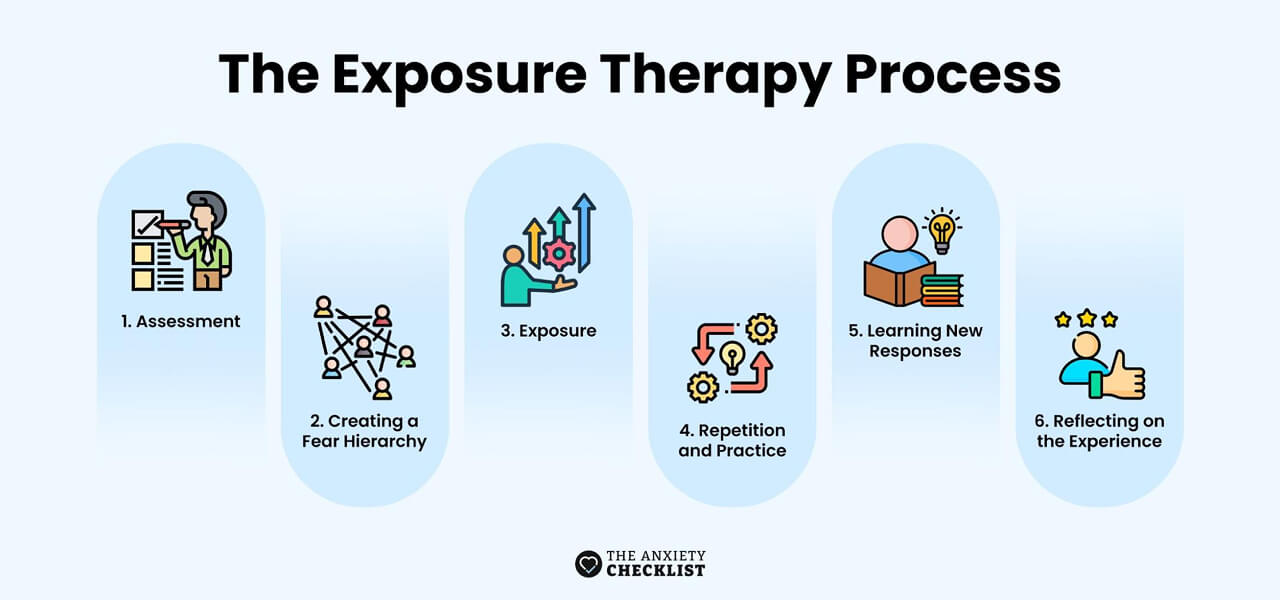
Benefits of Exposure Therapy
Living with untreated fear or anxiety can make everyday life feel challenging and impact your overall health. But exposure therapy can make things better for you. Here are some benefits of exposure therapy:
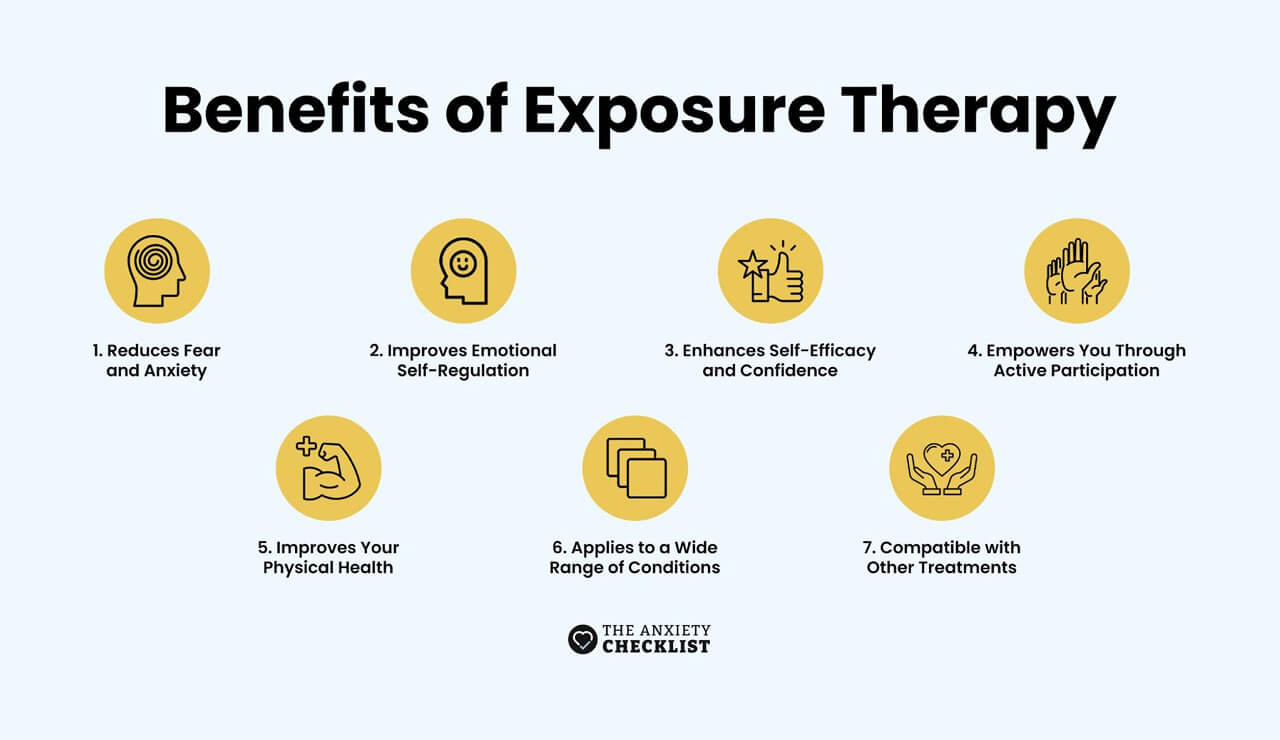
1. Reduces Fear and Anxiety
2. Improves Emotional Self-Regulation
3. Enhances Self-Efficacy and Confidence
4. Empowers You Through Active Participation
5. Improves Your Physical Health
6. Applies to a Wide Range of Conditions
7. Compatible with Other Treatments
Where to Get Help with Exposure Therapy

Seeking help for anxiety, phobias, or traumas is the right step towards mental well-being, and it’s important to find the right healthcare professional. Not every counselor or therapist provides exposure therapy.
However, you can get help from a licensed psychiatrist, psychologist, or trained therapist. Here are some tips to help you choose the right professional:
Frequently Asked Questions
You’ve Got This!

Advertisement
BetterHelp
BetterHelp makes starting therapy easy. Get a tailored therapist match based on your needs and preferences - in as little as 24 hours!
Enjoy 20% off your first month with code "anxietycheck"

4 million+ Helped
Access Therapy 24/7
Preferred by 94% of users
If you are in a crisis or any other person may be in danger - don't use this site. These resources can provide you with immediate help.


